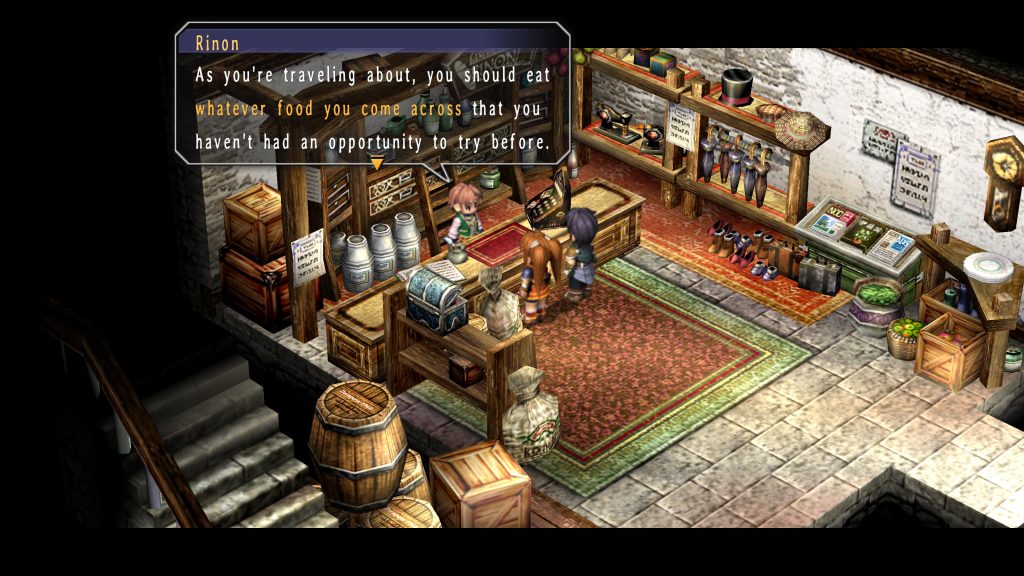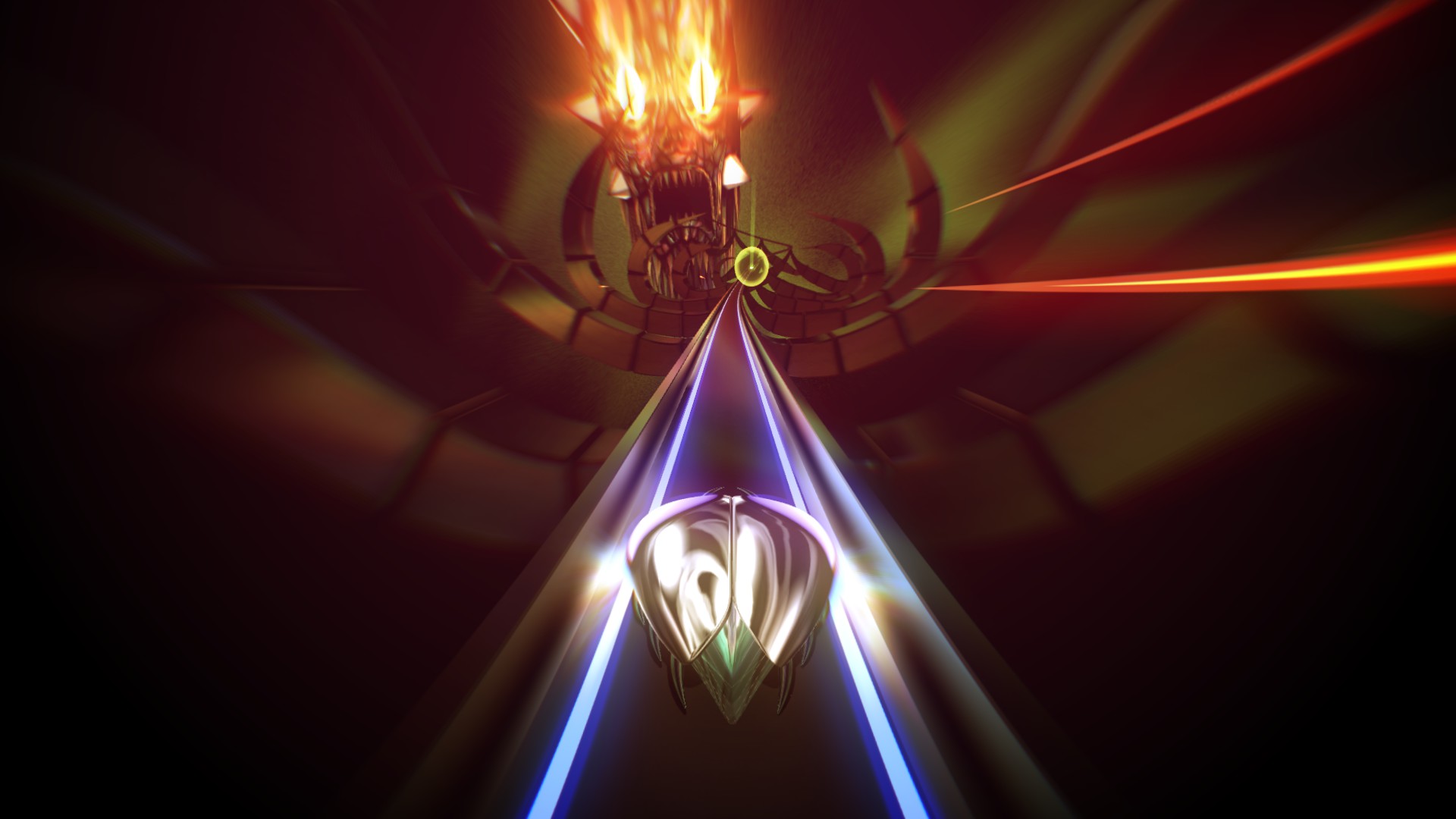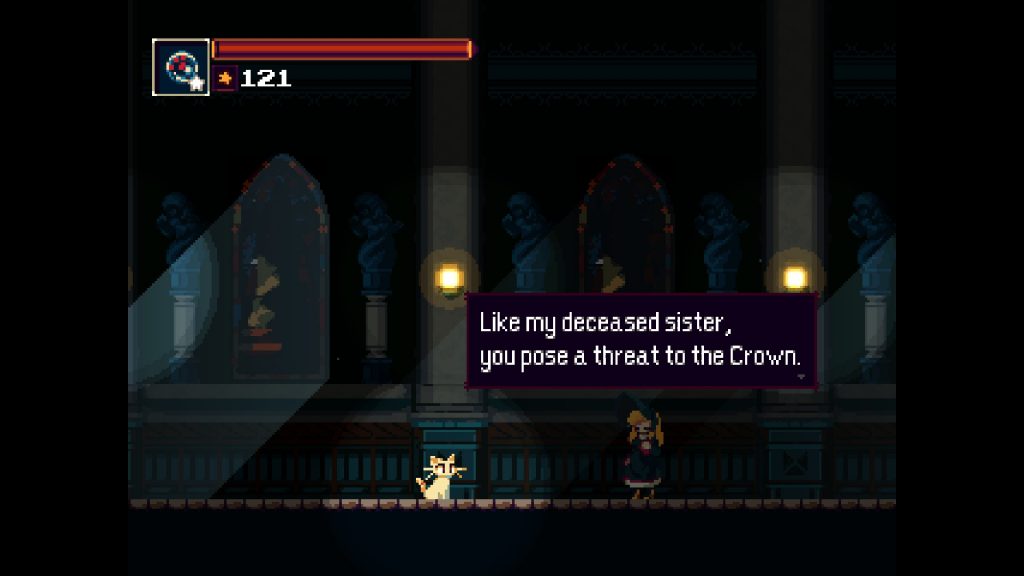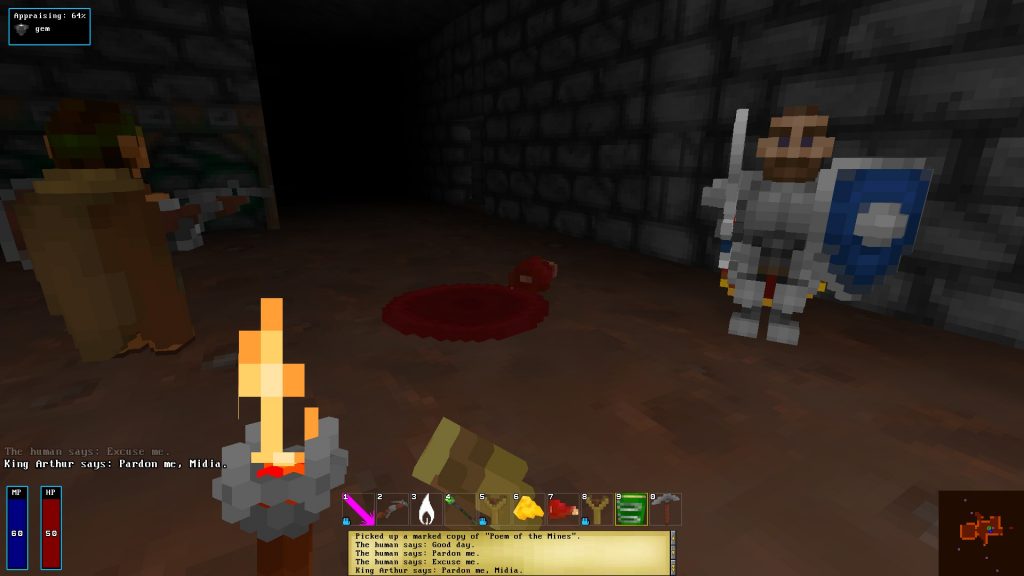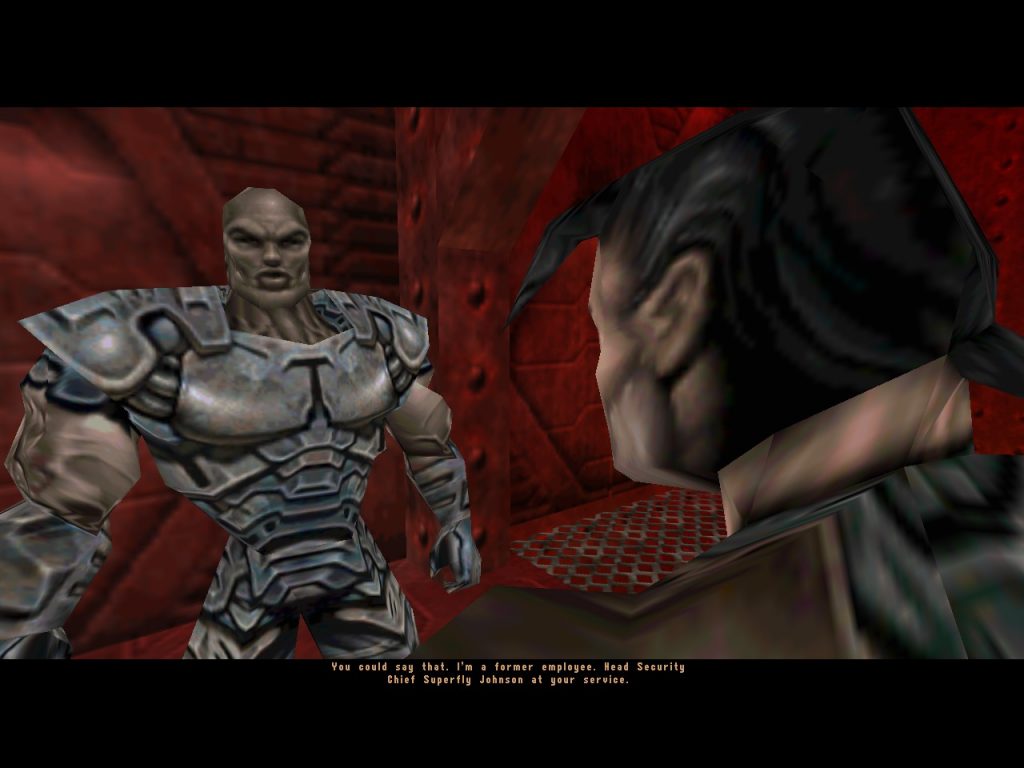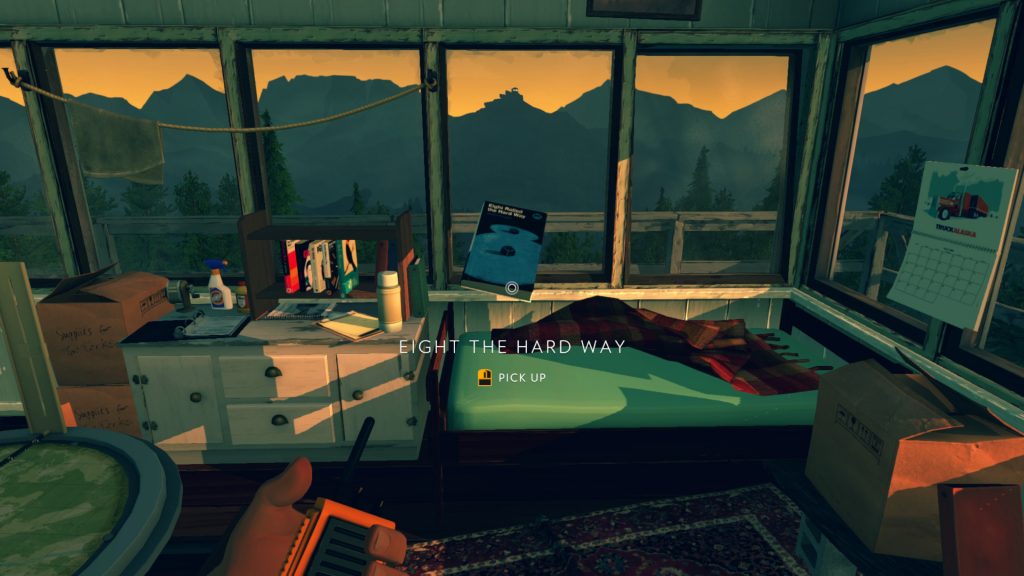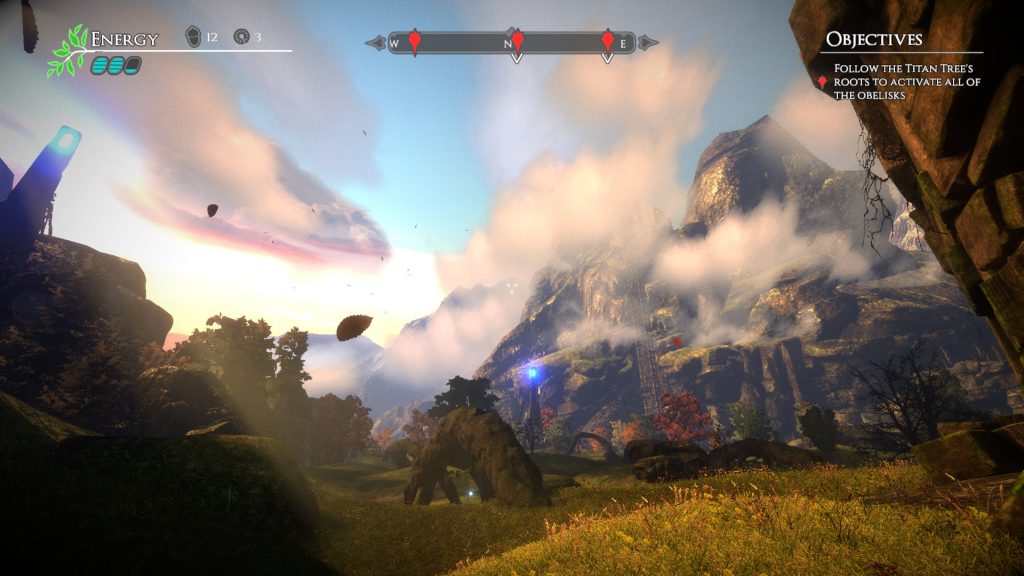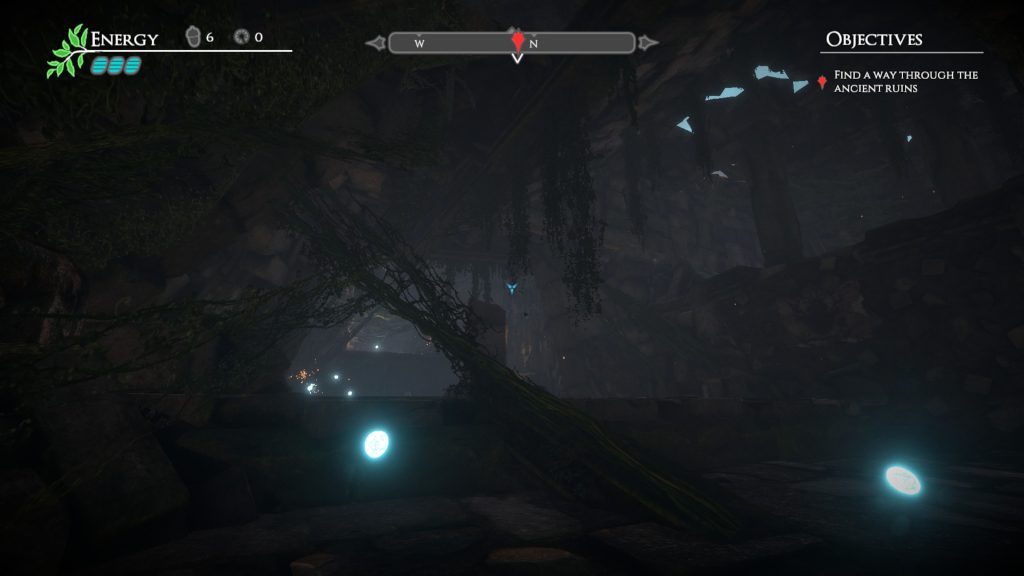Fantastic advice by the first shopkeeper in the game, right there.
Octodad (Completed)
It would be unfair and unrealistic to ask more from Octodad than what it is. Upon its completion, not much more is gleaned in addition to its first impression. It maintains the same level of comical humor resulting from an incognito octopus assuming the persona of a 1960’s-something husband, whist avoiding the chef from The Little Mermaid. Mechanically speaking, it never gets deeper than the awkward QWOPian/Surgeon Simulator requirement of completing mundane tasks in non-mundane ways, but therein eternally lies the problem with these game types–getting “good” at the game sort of makes you a loser, since all the fun had from these games is being bad at them, and laughing at the ridiculous scenarios that result in accord. That being said, it’s a short enough game (maybe 4 hours) and while it may be a Tier 2~3 game mechanically, it’s concept is Tier 1 which for me is enough to hold its place in our highest accolade.
Thumper
I take back what I have said about rhythm games in the past. About the genre, I mean. BIT.TRIP is still a terrible game. But Thumper … Thumper is not a game you play. Thumper is a game you feel. And it feels very, very good.
My complaints against BIT.TRIP were mostly about requiring perfection. This is not true in Thumper – you have an armor system, short levels, checkpoints, and more – all with no need for a complicated interface (the above is in the middle of a boss fight). With the armor system, you get one “mistake” per section. But at the end of each section (and sometimes within), you can regain your armor. This is good design – prove you can do better, and you are rewarded. The tutorials are well thought out and integrated into the gameplay. A sign that you’ve done extremely well is that the controls feel natural – and once you get through the first section or two, they feel fantastic – added to by the perfect timings of audio cues. My only true complaint is that I couldn’t take good screenshots since there’s never enough time except between sections.
There’s certainly a degree of bias here – they combined my love of fast racing, psychedelic visuals, and drum beats into a truly wonderful game experience. But if I’m having fun, that was sorta the point – and I simply can’t wait to try it in VR. Tier One.
Momodora: Reverie Under the Moonlight (Completed)
Momodora was in no way a bad game. It maintained its extremely high level of sprite detail throughout the entire game. The mood and setting never let up and there was a plethora of minor details in the background and gameplay that hinted at a deeper lore. Broken shrines, untended graves, haunting pictures–even the NPCs have several little nuances that imply or even present a darker image of death and possibly in one case, suicide. And yes… you can turn into a cat.
Continue reading “Momodora: Reverie Under the Moonlight (Completed)”
Barony (Completed)
I beat this one a while back, so forgive me if I don’t remember everything, but Barony is hella solid.
Barony, as you may remember, is a roguelike with Minecraftian graphics. While it lacks a lot of the extremely granular features that many of the “hardcore” ASCII roguelikes offer, this game rocks socks in many unexplored real-time aspects of roguelikes. Aspects like…
Daikatana (Finished)
I’m starting to think that there are actually a very small number of games worth playing… for me. Obviously, everyone’s tastes are different, so what is appealing to some may be repulsive to another, but sadly, I must add Daikatana to the same dredge pool that Divine Divinity fell to–a game that was a first impression Tier 1, lowered to a final impression Tier 3.
Firewatch
Firewatch had potential. But, maybe because I actually wanted to play a fire lookout game, I didn’t find it enjoyable. It just doesn’t truly succeed at anything it tries. Story wise, you are a man in his late 30s trying to escape life by taking a job as a fire lookout in Wyoming. You start talking with the supervisor of the fire watch posts, Delilah, and develop a rapport. There are hints of a conspiracy and a love triangle, and the dialogue is quite well written.
Spoilers past the break!
Subnautica
I started playing Subnautica with the intention of spending an hour on it and then going to watch the West Wing. I ended up spending several hours on it and I plan on going back as soon as I finish this review.
In what started as a very familiar intro, the spacecraft I was aboard broke apart and I got to one of the last life pods – no other apparent survivors. I crash land in the middle of an ocean, and start looking around for ways to survive. Unlike The Solus Project, my survival seems to be the main objective. Unlike FarSky, surviving and progressing is actually difficult and interesting, and the wildlife don’t all immediately attack you (well, except for Crashfish – Crashfish are jerks). For now, Subnautica is a solid Tier One (though I am just now feeling the pain of not having enough storage space, which turns a few things into a bit of a grind).
The Solus Project
In stark contrast to Valley, The Solus Project has a painfully slow walking speed (or I just shouldn’t have gone from Valley straight to The Solus Project). In the Solus Project, a sole survivor of a exploratory probe has crash landed on an unknown world. There’s a dead civilization and a not-so-dead one to explore, all the while trying to stay alive, stay warm (but not too warm), and get a message back to the colony ships. It’s very pretty, and there are a lot of things to like. Unfortunately, the tasks of staying alive become mere annoyances during a slow, ponderous walk to find seventeen parts for a communications array. I very much wanted to like this game, but in the end it is no more than a fetch quest.
Valley
When it comes to running around at ludicrous speed, Valley gets it. Movement should be fun. If you have a massive level or open world game, getting from point A to point B should have roughly the same content density as your finely crafted sections. That usually means having a truly massive number of random little things (à la Skyrim) or increasing your movement speed and making moving the fun part. Valley chose the latter.
You are an archaeologist looking for the mythical “life seed” in the Rocky Mountains (you might not have a fedora and bullwhip right now, but you probably will soon). As all protagonists do, you ignore the buddy system and float a canoe hundreds of miles away from anybody else. Predictably, you crash. Also predictably, you find yourself in the long-lost titular Valley, next to a crashed military Jeep with an experimental L.E.A.F. suit that allows normal humans unbelievable power (high jumps and questionable immortality among them). It’s quite a bit of fun, spoiled only by the lack of a true open-world design and an energy mechanic that becomes less and less relevant as the game progresses.
A very spoilery aside with a mechanics change suggestion: the energy bits you pick up are later revealed to be the eggs of some creatures you find. It’s a strange twist – and I’m not sure why it exists, since it is tangential to the whole “blowing the world up is bad” narrative. The story wouldn’t suffer if it just wasn’t included. Along with this, I would also recommend a change to the energy mechanic: instead of collecting the eggs, the energy should just regenerate. In earlier stages there are enough eggs to keep you in energy all the time and in later stages you have enough energy stored that it doesn’t matter. It would make the “running on water” and “magnetic boot” upgrades a lot more interesting if they slowly drained energy rather than just happening.
Valley took me five hours to beat and then get bored of trying to find collectibles. Interestingly, I got bored of finding collectibles because the game was too easy to break. In your L.E.A.F. suit, you can jump very high and run very far in a short amount of time. For some reason, the level design doesn’t take this into account, so I found it incredibly easy to find myself out of bounds with two-dimensional trees and physics-less rocks. Because of this, it was awfully difficult to figure out when I was on the path of a new collectible or about to send myself through five minutes of wandering out of bounds.
Nevertheless, I had fun and there were a lot of good concepts. I wish that the game was designed so that the main plot was along the “path” that L.E.A.F. suit owners would normally find themselves as they go through training or check in to the government facilities, while the collectibles and such were scattered about a wide open Valley area – though I realize that would take quite a bit more resources.
